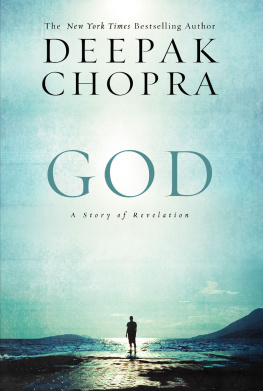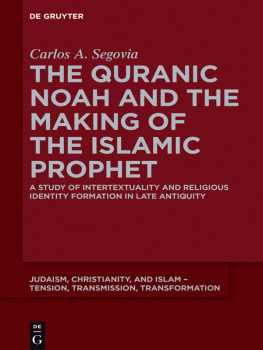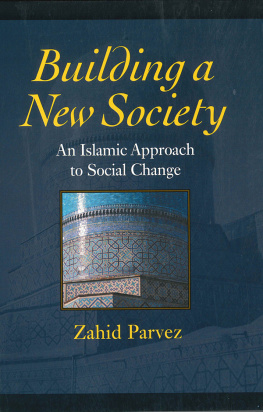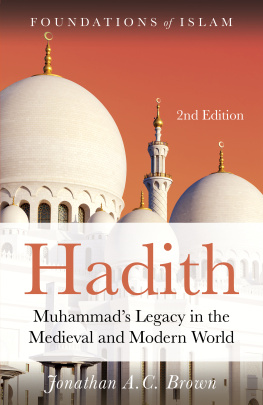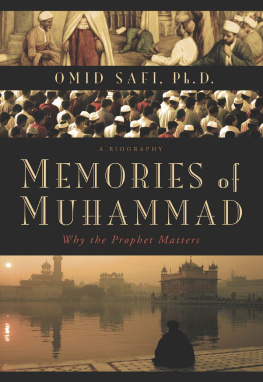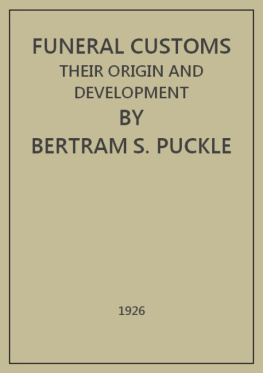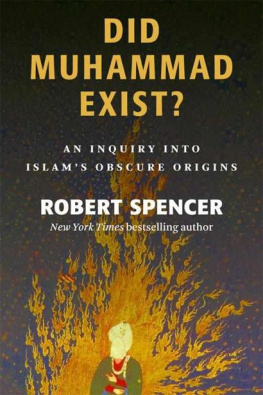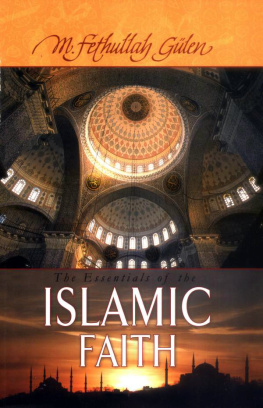MUHAMMADS GRAVE
MUHAMMADS
GRAVE
Death Rites and the Making of Islamic Society
Leor Halevi
COLUMBIA UNIVERSITY PRESS
NEW YORK
Columbia University Press
Publishers Since 1893
New York Chichester, West Sussex
cup.columbia.edu
Copyright 2007 Leor Halevi
Paperback edition, 2011
All rights reserved
E-ISBN 978-0-231-51193-3
The author and the press thank the Medieval Academy of America, the College of Liberal
Arts at Texas A&M University, and the Melbern G. Glasscock Center for Humanities
Research for grants supporting in part the publication of this book.
Library of Congress Cataloging-in-Publication Data
Halevi, Leor.
Muhammads grave : death rites and the making of Islamic society / Leor Halevi.
p. cm.
Includes bibliographical references and index.
ISBN 9780231137423 (cloth : alk. paper)
ISBN 9780231137430 (pbk. : alk. paper)
ISBN 9780231511933 (e-book)
1. IslamHistory. 2. IslamSocial aspects. 3. Funeral rites and ceremonies, Islamic.
4. Muammad, Prophet, d. 632. I. Title.
BP50.H34 2007
297.3'85dc22
2006025614
A Columbia University Press E-book.
CUP would be pleased to hear about your reading experience with this e-book at .
Contents
Urban Processions and Communal Prayers:
Opportunities for Social, Economic, and Religious Distinction
| 1.1 | The tombstone of Fima bint al-asan (d. 102 AH/721 CE) |
| 3.1 | An early Islamic tunic of undyed wool |
| 3.2 | The fragmented wool tapestry identified with caliph Marwn |
| 3.3 | A seventh-or eighth-century weaving from a Persian or Mesopotamian loom |
| 4.1 | Desperate women and mournful men |
| 5.1 | Man bearing a bier |
I began researching Islamic death rituals in Paris in the spring of 1999, wrote the first chapter in Cambridge, Massachusetts, and drafts of others in Philadelphia; I revised the manuscript in College Station, Texas, and completed the book in Washington, D.C., in the winter of 2005. Over the course of researching and writing, I incurred many debts I am glad to acknowledge. In the first place, I would like to express my gratitude to my teachers, Roy Mottahedeh, Michael Cook, and Wolfhart Heinrichs. They read an early draft of this book (my doctoral dissertation), provided me with key suggestions that led me to reconsider arguments and translations, and expanded my horizons by introducing me to new sources. William Graham also served as a reader of my thesis and made many helpful comments, for which I am grateful. Everett Rowson, Muhammad Qasim Zaman, and Gerald Hawting served as the anonymous readers of the manuscript for Columbia University Press. Thanks to their generous, meticulous criticism and insightful suggestions, the revised manuscript is far better than my original submission. Throughout this book I have tried to do justice to the high standards of these seven scholars. Despite my best efforts, certain errors may remain, and for these I must claim sole responsibility.
A number of fellowships enabled me to devote several years of my life to researching in various libraries. The American Council of Learned Societies granted me the Library of Congress Fellowship in International Studies. On account of this fellowship, I was able to research Arabic manuscripts at the Library of Congress, both in the Law Library and in the African and Middle Eastern Reading Room, and to write in the supportive, intellectual environment of the John W. Kluge Center. Harvard Universitys Packard Fellowship in the Humanities provided me with the necessary funding to conduct research at the University of Pennsylvanias Van Pelt Library and at Princeton Universitys Firestone Library. Thanks to the Center for the Study of World Religions, which granted me a residential fellowship, I enjoyed the recondite treasures of Harvard Universitys Widener Library and the Law School Library. In addition, Harvard University and Texas A&M University supported my work with a series of modest but instrumental grants. Kindly honoring my requests, librarians at Harvard Universitys Dumbarton Oaks Library and at Texas A&M Universitys Evans Library acquired a number of rare or essential books. I am grateful to all of these institutions and their staff for facilitating my research.
My work benefited also from the suggestions of numerous individuals who commented critically on a draft, engaged me in a stimulating dialogue, or recommended readings that nurtured my imagination. In particular I should like to thank Eli Alshech, Terry Anderson, Peter Brown, Patricia Crone, Brian Delay, David Frankfurter, emal Kafadar, Hayim Lapin, Christopher Melchert, Hossein Modarressi, Harald Motzki, Maya Mller, Kevin Reinhart, Paula Sanders, Bernard Septimus, and Lennart Sundelin. I also thank the members of various writing groups at Harvard, the University of Pennsylvania, and Texas A&M, and the anonymous readers of my articles in Past & Present and History of Religions.
These articles are Wailing for the Dead: The Role of Women in Early Islamic Funerals, Past & Present 183 (2004): 339; and The Paradox of Islamization: Tombstone Inscriptions, Quranic Recitations, and the Problem of Religious Change, History of Religions 44 (2004): 120152. I thank the Past and Present Society, Oxford University Press, and the University of Chicago Press for granting me the permission to reprint with modifications my contributions to their journals.
Christopher Graff designed the map, in consultation with me and under the guidance of the geographer Christian Brannstrom. Rob Fellman copyedited the manuscript; Robert Swanson indexed it; and Michael Haskell edited it. I thank them all for their fine work.
My editor at Columbia University Press, Wendy Lochner, has been amazingly effective in replying to my numerous queries. I thank her, also, for her enthusiasm for this project.
Lauren Clay, my wife and colleague, advised me on nearly every aspect of this book. I am most grateful for her companionship over the years, for her critical reading of two drafts, and for indulging my fascination with the rise of Islam. Our son, Joshua, has spent half of his life in Washington, D.C., away from our home in Texas, to allow me to write this book while enjoying his company. With his extrabiblical stories about the origins of the Israelites, my grandfather, Saba Bela (Benyamin Karmeli), first kindled my interest in the history of religion. I dedicate this history to his memory.
Arabia, Mesopotamia, and the Eastern Mediterranean World
P erhaps the story should begin with an oral tradition set in the city of Medina in the year 632, moments before the death of Muammads daughter. Sensing the end of her life, after suffering in illness for several months, Fima recognized the time had come to prepare for her own death and burial. So she asked Salm, a woman in her company, to pour water for a bath. Having purified her body in a ritual ablution, Fima dressed in new clothes and instructed Salm to place her bed in the middle of the room. Fima then lay down facing in the direction of the qibla, the focal point of Muslim prayers, and spoke her last words: The hour of my death has come and I have already purified myself. May no one bare my shoulder. When Fimas husband returned home, Salm informed him of his wifes wishes, and he complied, burying his wife without subjecting her body to the standard ritual of corpse washing.


